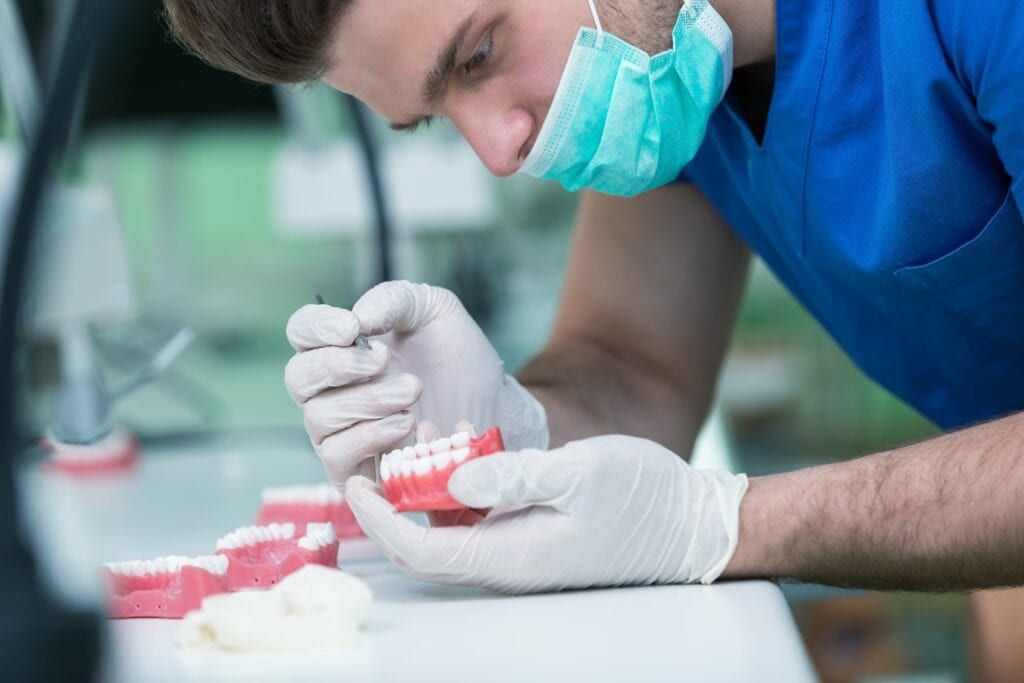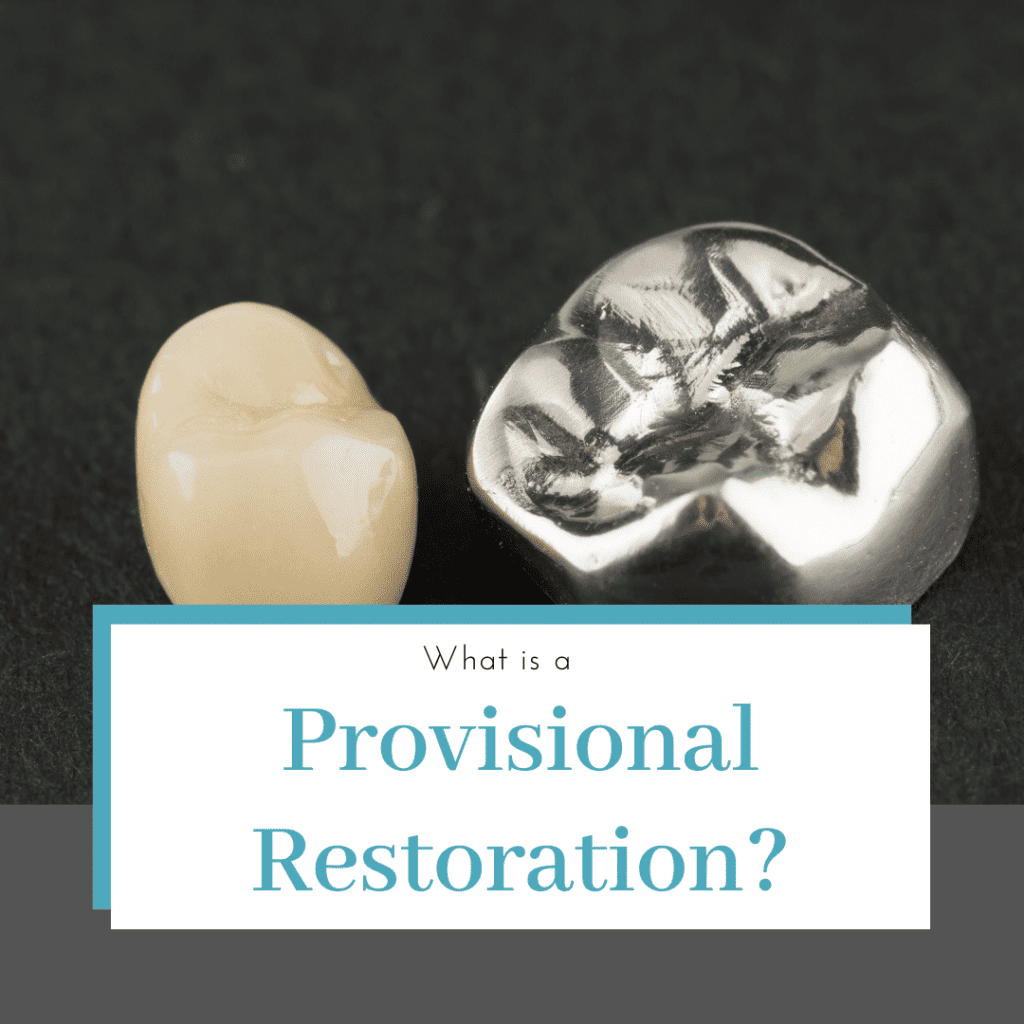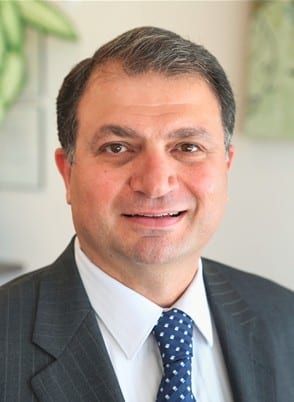The aesthetics of dental restorations has come a long way. The introduction of new, quality dental materials, as well as the development of improved fabrication techniques and technology means that today’s dental restorations are able to mimic the look and function of natural teeth. While some dental offices can accomplish this through in-office milling machines, most offices rely on the use of an experienced dental laboratory to fabricate their restorations.
While having a dental laboratory fabricate your restoration means that you will be receiving a high-quality, aesthetically pleasing, and durable restoration, it also means that you will need to wait briefly for this restoration. This is because indirect restorations, or restorations fabricated outside of the mouth, require two dental appointments to complete. During the first appointment, your natural tooth structure is prepared for the restoration by removing decayed or damaged tissue, then reshaping the remaining tissue. Once the tooth has been prepared, a dental impression or oral scan will be taken to obtain the information that the dental lab needs to fabricate your restoration. After your restoration is complete, then the second appointment is needed to place the restoration.
Since a dental impression or oral scan is taken during the first appointment, this means that there will be about a 1-2 week window between your first and second appointments. During this time, your permanent restoration is carefully being fabricated according to the specifications of your dental impression or oral scan. However, since your tooth structure is also modified during your first appointment, this means that you will need a way to protect your tooth until the permanent restoration is placed.

For this reason, your dentist will place what is known as a provisional, or temporary, restoration. Provisional restorations are available for any indirect restoration such as veneers, crowns, inlays, onlays, or bridges. Their main purpose is to reserve the necessary amount of space and contact points for the permanent restoration. They also protect your natural tooth structure from exposure, while also maintaining the visual appearance of the affected tooth.
However, it is important to note that provisional restorations are not like permanent restorations. For starters, they lack the durability, proper fit, and aesthetics of permanent restorations. This is simply because they are only made to last for the 1-2 weeks between your first and second appointments. As such, there are some temporary guidelines you will need to follow while wearing a provisional restoration.
One of the most important guidelines is to avoid chewing on the side of your mouth that has the provisional restoration. This is because using your provisional restoration to chew increases the risk of it breaking, becoming loose, or falling off entirely. This is especially true when chewing sticky, chewy, crunchy, or hard foods. Provisional restorations can also become loose or fall off due to the fact that they do not properly fit around your tooth, so using the affected tooth to chew only increases the likelihood of this happening.
If your provisional restoration falls off, you will need to call your dentist to determine if it needs to be replaced. Generally speaking, you will need to have the provisional restoration replaced if your permanent restoration is still being fabricated. This is because your provisional restoration is essential for preserving the proper amount of space for your permanent restoration. Additionally without a provisional restoration, your natural tooth structure is exposed and can cause tooth sensitivity since it has been modified.
Provisional restorations are essential, yet temporary restorations that are worn in between your first and second dental appointments when having an indirect restoration placed. You can expect to have a provisional restoration placed when getting a crown, bridge, inlay, onlay, or veneers. Although provisional restorations lack the fit, durability, and look of a permanent restoration, this is because they are only intended to last 1-2 weeks while a dental lab fabricates your permanent restoration.


